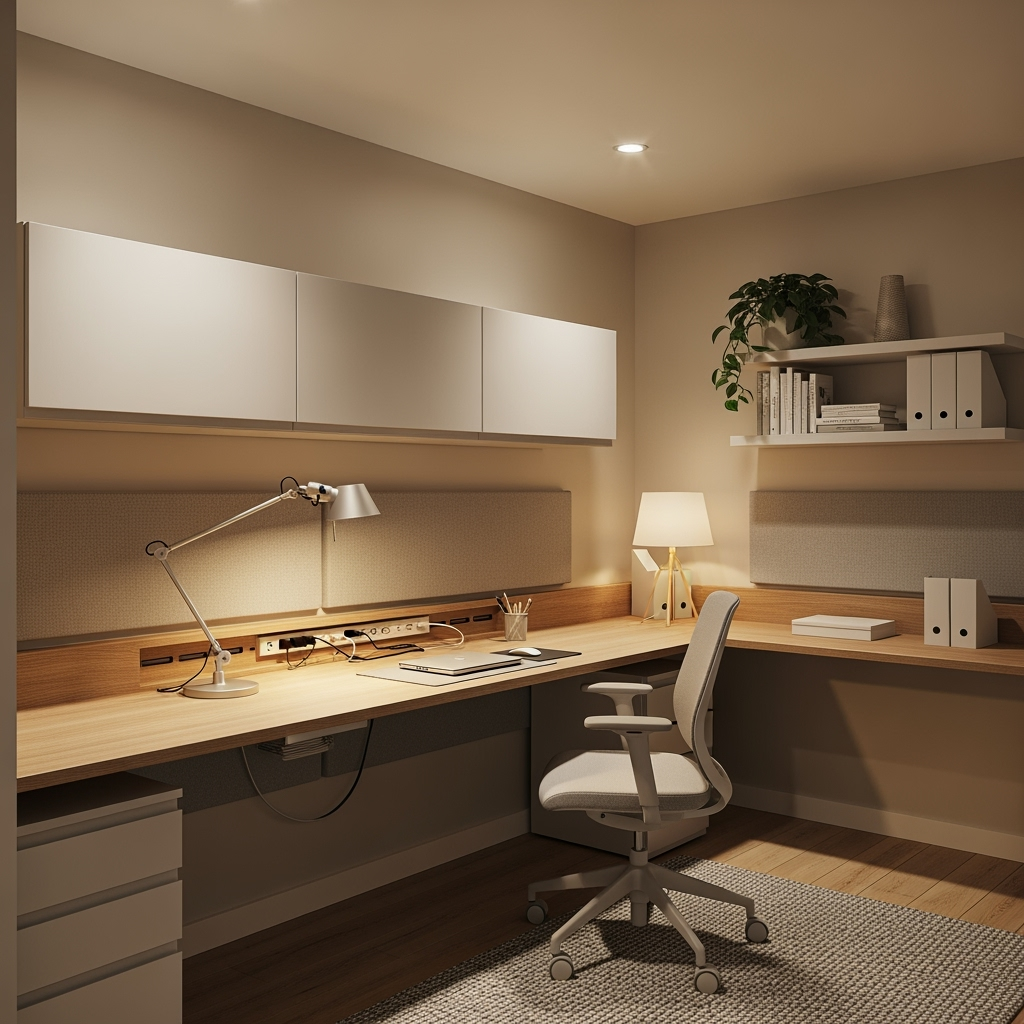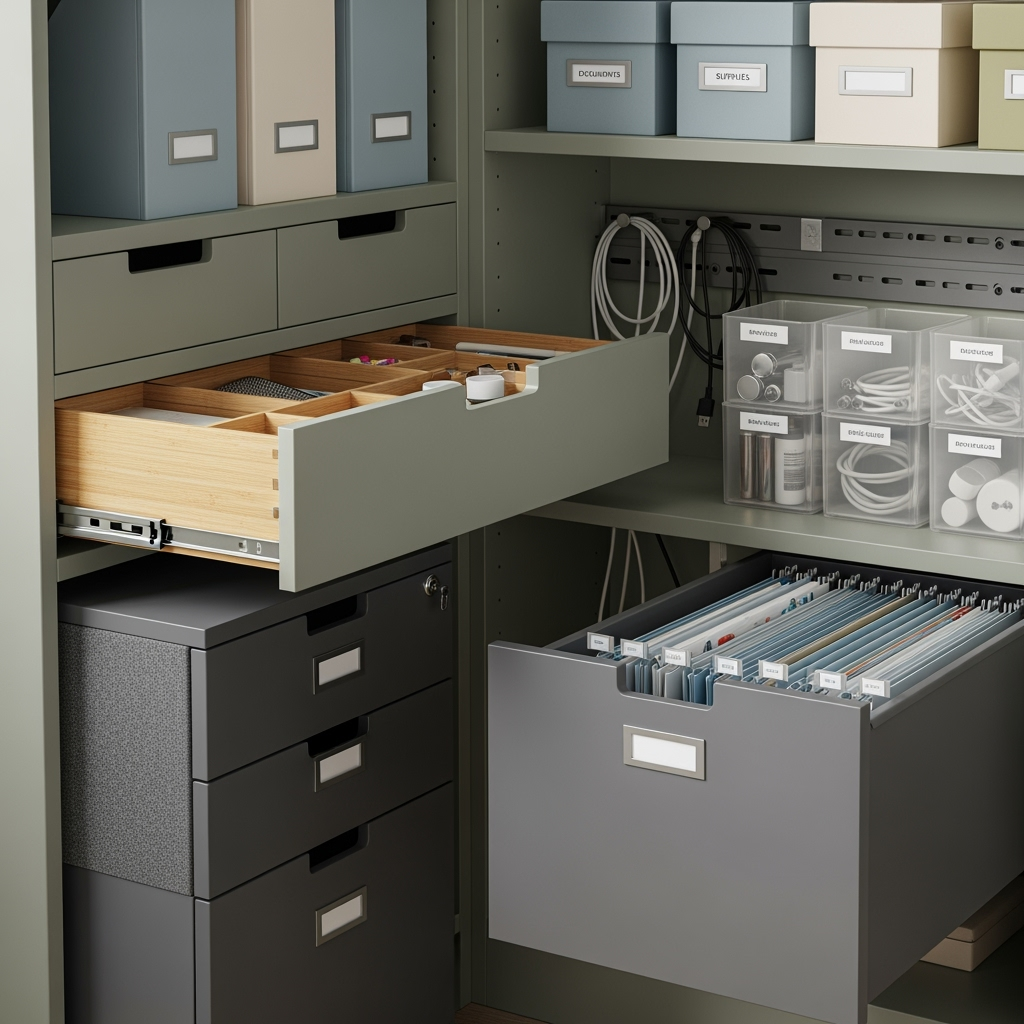
Why Sensory-Friendly Storage Matters in Remote Work
As remote work becomes increasingly common, creating a workspace that accommodates sensory needs while maintaining organization has become essential for productivity and well-being. Whether you’re sensitive to visual clutter, noise, or tactile experiences, thoughtful storage solutions can help create a more comfortable and efficient home office environment.
Key Elements of Sensory-Friendly Storage
Consider these essential components when designing your storage system:
- Sound absorption: Choose storage units with soft-close features and sound-dampening materials
- Visual organization: Implement closed storage solutions to reduce visual stimulation
- Tactile comfort: Select storage containers with comfortable textures and easy-grip handles
- Light management: Use anti-glare surfaces and adjustable storage solutions that help control lighting

Implementing Smart Storage Solutions
1. Sound Management
Transform your workspace into a quiet haven with these solutions:
- Install rubber-lined drawers to prevent noise
- Use fabric storage bins for frequently accessed items
- Add felt pads to storage unit bases
- Choose storage furniture with noise-reducing features
2. Visual Organization
Keep visual distractions at bay with these strategies:
- Use cabinets with doors to hide busy materials
- Implement a color-coding system with muted tones
- Choose matching storage containers for visual consistency
- Create designated zones for different types of materials
3. Tactile Considerations
Make your storage solutions comfortable to touch and use:
- Select storage containers with smooth, pleasant surfaces
- Install easy-pull handles on drawers and cabinets
- Use soft-touch materials for frequently accessed items
- Choose storage solutions with rounded edges
Climate-Controlled Storage for Sensitive Materials
When your home office can’t accommodate all your materials, consider using Public Storage’s climate-controlled units to store excess supplies and seasonal items. These units provide:
- Consistent temperature control to protect sensitive equipment
- Humidity regulation for paper documents and materials
- Protection from environmental stressors
- A quiet, controlled environment for organizing materials
Creating Zones for Different Sensory Needs
Organize your storage based on sensory requirements:
- High-touch zones: Place frequently used items in easily accessible, tactile-friendly storage
- Low-stimulation zones: Keep visually busy materials in closed storage
- Quiet zones: Position noise-generating equipment in sound-dampening storage
- Flexible zones: Use mobile storage solutions that can be adjusted as needed
Maintenance and Adaptation
Keep your sensory-friendly storage system working effectively:
- Regularly assess and adjust storage solutions based on changing needs
- Clean and maintain storage units to ensure quiet operation
- Update organization systems as your work evolves
- Monitor the effectiveness of different solutions and make changes as needed
Professional Tips for Long-Term Success
Maximize the benefits of your sensory-friendly storage with these expert recommendations:
- Start small and gradually implement changes
- Keep a log of what works best for your specific needs
- Consider seasonal changes in light and sound when planning storage
- Create backup systems for essential organization methods
Conclusion
Creating a sensory-friendly storage system for your remote workspace is an investment in both productivity and well-being. By thoughtfully implementing these solutions and utilizing Public Storage’s climate-controlled units when needed, you can create an organized, comfortable environment that supports your work while respecting your sensory needs.










Leave a Reply